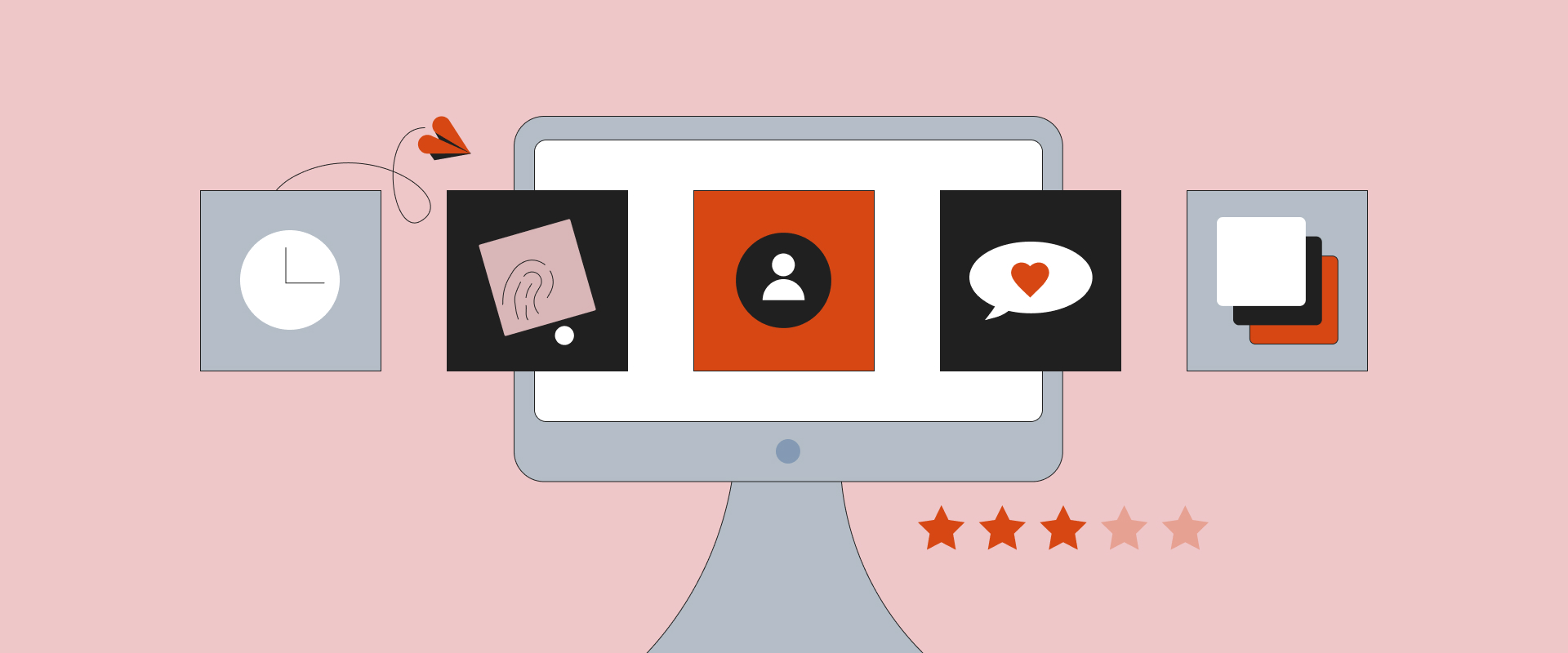Introduction to Inclusive UX/UI Design




Have you ever broken your arm as a kid? I know it's not exactly a fond memory, and luckily, it's not something adults go through often, but picture this: your friend just broke their arm and suddenly can't use their phone like they used to. Instead of typing, they would have to rely on voice messages to communicate.
This scenario perfectly highlights why inclusive UX/UI design is so important. It's not just about meeting accessibility standards but about creating experiences that provide a diverse range of users with varying needs and abilities. This means ensuring everyone, regardless of their capabilities, can interact with digital products seamlessly.
There are no two completely identical users, and inclusive design takes this into account by avoiding designs intended just for one group of users. However, some users can still feel excluded and marginalized by different factors. Here are the most common ones:

Inclusive design isn't just a nice-to-have feature but an essential part of UX/UI design. It involves designing with empathy and respect for diverse users and having a deep understanding of their backgrounds and abilities. Every designer should prioritize creating designs that allow everyone to join in and feel like they belong rather than designing for all users in the same way.
Many countries have established laws and regulations to ensure digital accessibility to reinforce these principles. One of them is the European Accessibility Act, a legislative framework adopted by the European Union that will be enforced on June 28, 2025. That's less than a year away! 😱The EAA establishes minimum accessibility requirements for digital products and services, such as websites, mobile apps, and e-commerce, to benefit users with disabilities.
Now, let's clear up the difference between accessibility and inclusive design. These terms are often used interchangeably, however, they are related concepts, not the same. Accessibility is the primary outcome of an effective and inclusive design process. It focuses on the end result or outcome of the design, ensuring that all users can use the final product. That's why we have the Web Content Accessibility Guidelines (WCAG) — to set a common standard and make web content more accessible for all users. On the other hand, inclusive design emphasizes the approach, not just the outcome. It’s a process of creating experiences that can be used by a broad, diverse group of users, and it starts by identifying situations where users are excluded from using the product.

Inclusive design benefits all users, regardless of their abilities or background, but it also offers significant advantages for brands. Its importance can be considered from various perspectives, and I've pointed out three major benefits.
Inclusive design ensures that everyone can use digital products, no matter their abilities or backgrounds, fostering a more effective and socially conscious user experience.
Stay tuned for more on this topic, as we'll be sharing best practices for inclusive design soon. In the meantime, if you have any burning questions or want to discuss this topic further, feel free to reach out. 🚀
Ena is a UX/UI Designer at COBE who loves all things creative. When she's not crafting amazing user experiences, she enjoys making illustrations, photography and aerial silk.




